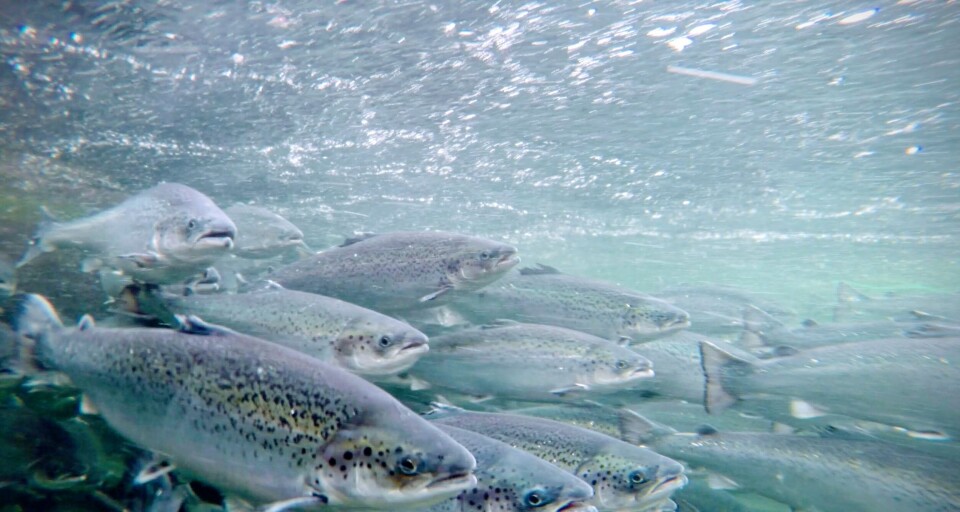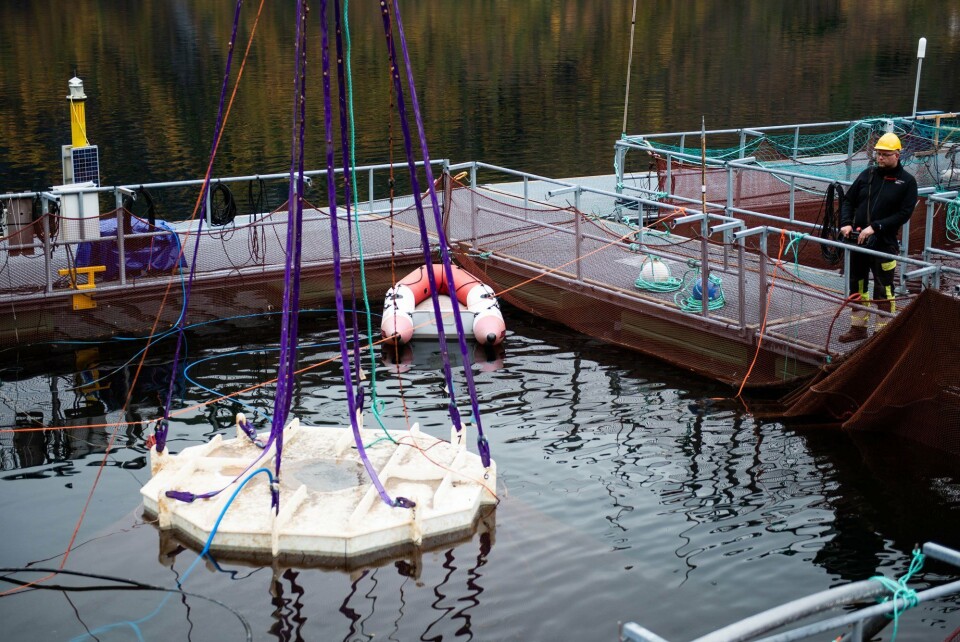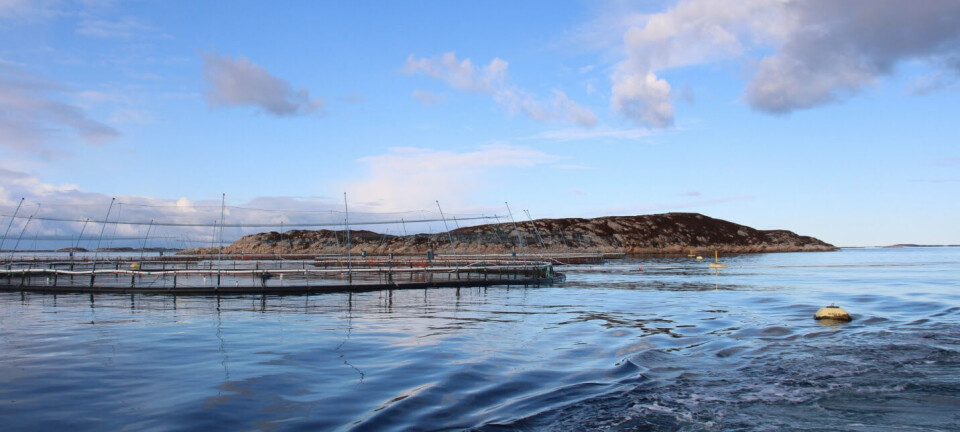
Salmon kept at depth 'had fewer lice but poorer health'
There are fewer lice on farmed salmon when their cages are fully submerged at depth during the entire sea phase, Norway’s Institute of Marine Research (IMR) has reported.
IMR carried out its first full cycle of salmon in submerged pens at its research station in Matre, in a collaboration with the University of Melbourne.
“After a large infestation of lice in salmon in the surface cages in the winter, the submerged fish had 93% fewer salmon lice than the control fish. Later in the year, they still got some lice, but only half as much as the control fish,” said senior researcher Frode Oppedal.
“This is the first time we have had the salmon in submerged cages from smolts all the way up to slaughter size. Previously, we only did this for limited periods.”

Air dome
The challenge with submerged cages is that salmon must have access to air.
“The salmon must have access to fill the swim bladder, it is crucial for it to be able to control the buoyancy normally,” said Oppedal.
The researchers have solved this with the help of an air dome. When the cage is lowered, all sides, including the “roof”, are covered with net.
“On top of this roof, we have placed air domes so that the salmon can seek these out when it needs to refill its swim bladder,” Oppedal explained.
Normal behaviour
In the experiment, three submerged cages were used, each containing 6,000 farmed salmon. At the start of the experiment, they were approximately 200 grams, and when the experiment was completed they were closer to 5 kg.
“The air domes worked and we saw that the salmon replenished their swim bladders diligently and had normal behaviour in the cages throughout the experimental period of 12 months,” Oppedal said.
The swimming speed of salmon in the experiment and a control group was also examined. During the day, salmon swam around the cages at a speed of ½ – 1 fish length per second, regardless of whether they had access to the surface or a “dome surface” down in the depths.
Brackish water
The Matre research station is located in the Masfjord. Like many other fjords, it has a brackish water layer on the surface. This affects where in the water column the salmon lice stay, and although the submerged cages have a function against lice, the method is a little less effective in such fjords.
“In a fjord with brackish water at the top, keeping the salmon below 15 metres deep is not enough to get zero lice all year round,” explained Oppedal.
“The brackish water layer means that the lice larvae swim deeper in the fjords than in the saltier surface water off the coast and depth-based measures against lice can therefore be even more effective on the coast.”
Higher mortality
Although the salmon got fewer lice, the researchers encountered some challenges in terms of growth and animal welfare. The submerged salmon had lower growth, reduced fitness, higher mortality and impaired welfare.
“This is probably due to lower temperatures and poorer oxygen conditions at depth, and shows that it is necessary to have good knowledge of such conditions at a locality where the implementation such measures in full-scale production is being considered,” Oppedal said.
Masfjorden is a threshold fjord, which has led to little replacement of the bottom water in recent years and thus poorer water quality. Recently, the bottom water in this fjord has been replaced. Djupvatnet in Masfjorden has been replaced for the first time in 10 years.
IMR said future studies are needed to explore the full potential of submerged salmon farming with an air dome in varying, location-dependent environments and in possible combination with flexible, dynamic depth positioning.
About the project
The work is part of the innovation project Dypdom funded by the Research Council and the business partners Sinkaberg-Hansen and AKVA group.
The results are published in the journal Aquaculture together with postdoctoral fellow Fletcher Warren-Myers at the University of Melbourne.
Reference: Warren-Myers, Fletcher, et al. “Full production cycle, commercial scale culture of salmon in submerged sea-cages with air domes reduces lice infestation, but creates production and welfare challenges.” Aquaculture (2021): 737570.























































